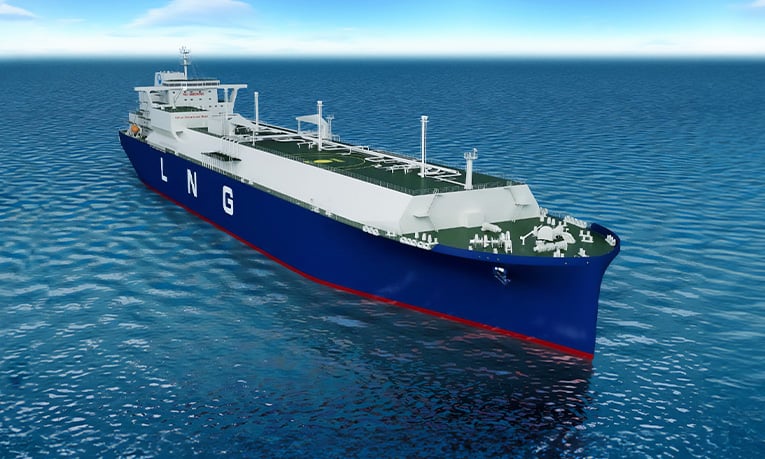
Half of India’s LNG imports come from Qatar and UAE, relying on Strait of Hormuz for supplies
NEW DELHI : Half of India‘s total natural gas requirement is met via imports that come through the Strait of Hormuz – supplied by Qatar and the UAE – and thus stands exposed to a higher risk of disruption, according to experts who track movement of energy supplies.
Out of this total import, over 50 percent is supplied by the two Gulf nations that ship LNG to India via the Strait of Hormuz route. Qatar – India’s largest LNG supplier – exports around 11.4 million metric tonnes (mmt) of LNG, which is over 40 percent of New Delhi’s total annual import. A closure of the shipping lines of the Strait of Hormuz poses a critical threat to these exports, as nearly all of Qatar’s outbound cargoes transit the strait to reach Asian markets, said Harshraj Aggarwal, analyst at Yes Securities.
“While no shipments have been disrupted so far, QatarEnergy has instructed tankers to delay Gulf entry until just before loading, reflecting heightened risk perceptions. For India, any prolonged disruption could lead to supply delays, higher spot reliance, and upward pressure on LNG prices, directly impacting Petronet LNG’s portfolio economics,” Aggarwal added. India’s state-run gas major Petronet LNG has a long-term contract with QatarEnergy for supplying 7.5 million tonnes per annum of LNG until 2048.
Asian spot LNG prices have already jumped around 11 percent Week-on-Week (WoW) to $14 per mmbtu (million metric British thermal unit) on fears of disruption.
To shield India from potential supply shock in the Middle East, New Delhi also sources LNG from countries that are logistically detached from the Gulf, including the US, Russia and Australia, among others.
Risk of Costlier Freight
Though energy supplies from the Middle East nations have remained largely undisrupted until now, freight costs for the India’s energy companies have shot up. Oil Minister Hardeep Puri on June 22 said the government is closely monitoring the evolving geopolitical situation in the Middle East and would take all necessary steps to ensure stability of fuel supplies to Indian consumers.
Middle East Conflict
With Middle East nations being large energy suppliers to India, the escalation of the Iran-Israel conflict over the weekend poses serious risk for New Delhi. US President had bombed Iranian nuclear facilities on June 21, increasing risks for vital shipping routes in the region.
India’s critical energy supplies are at risk as it is not only a big consumer but also primarily reliant on imports of crude oil (around 90 percent) and liquified natural gas (around 50 percent).
LPG: Another fuel at risk?
Not only oil and gas, but New Delhi is also highly dependent on imports of liquefied petroleum gas (LPG), which is India’s primary cooking fuel. The nation imports around 60 percent of its total LPG requirements. Data from global trade analytics firm Kpler says of the total LPG imports, India buys around 90 percent of the fuel from West Asian nations including UAE, Qatar, Kuwait and Saudi Arabia. The closure of the Strait of Hormuz would also cripple India’s LPG supplies shipped by the Middle East nations through the route. India’s LPG consumption have risen by 5.5 percent in FY24 from last year, government data showed.
Oil vs Gas
Though not immune, but India’s natural gas import exposure via the Strait of Hormuz is lower than the risk to crude oil. This is on account of two reasons – India’s higher reliance on imports for crude than LNG, and oil constituting a major share in the nation’s total energy basket versus natural gas.
According to Oil Ministry data, India is dependent on imports for nearly 90 percent of its crude oil supplies from countries such as Russia, Iraq, Saudi Arabia. In comparison, New Delhi imports around 50 percent of its natural gas requires.
Secondly, in India’s energy basket, oil and petroleum products form a significant portion – around 26 percent – as against natural gas’ share of 6 percent. India’s crude oil consumption too has continued to grow while the nation’s appetite for natural gas has stayed stagnant. India crude oil imports rose to 5.64 million barrels per day (bpd) in 2024 as against around 5 million bpd in the previous year. The International Energy Agency (IEA) expects this to further grow to 6.66 million bpd by 2030, the agency said in a report earlier this month.
India’s gas consumption, on the other hand, is growing at a slow pace. Domestic gas consumption grew only 7 percent in FY24 from last year, showed oil ministry data.
Source : Moneycontrol
